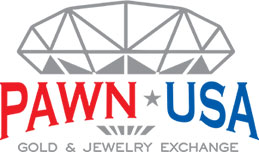- April 8, 2024
- Posted by: pawnusa
- Category: blogs

Diamonds are undoubtedly one of the most sought-after gemstones in the world, captivating our imagination with their sparkling beauty and timeless elegance. But have you ever wondered why these precious stones come with such hefty price tags? In this article, we will explore the factors that contribute to the high prices of diamonds, shedding light on their rarity, unique characteristics, and the complex market dynamics that drive their value.
Rarity and Scarcity
One of the key reasons why diamonds command high prices is their inherent rarity. Diamonds are formed deep within the Earth’s mantle over billions of years, under intense heat and pressure. These geological phenomena make the conditions for diamond formation incredibly rare, resulting in only a small fraction of diamonds being suitable for use in jewelry. Additionally, diamond mines are few and far between, and the extraction process is labor-intensive, further limiting the supply of these precious gems.
Unique Physical Properties
Diamonds possess several unique physical properties that enhance their desirability and contribute to their high price. The most notable characteristic is their exceptional hardness, making them the hardest naturally occurring substance on Earth. This property ensures that diamonds can withstand scratches and remain unblemished throughout their lifetime, making them ideal for jewelry that is meant to be worn regularly.
Another quality that sets diamonds apart is their exceptional brilliance. Diamonds can reflect and refract light with unparalleled brilliance, resulting in the renowned sparkle that captures our attention. The complex internal structure of a diamond allows light to pass through and bounce off multiple surfaces, maximizing its beauty.
The 4Cs of Diamond Grading
Diamonds are evaluated and graded based on the four essential criteria known as the 4Cs: cut, color, clarity, and carat weight. These attributes have a significant impact on the overall value of a diamond, with each factor meticulously assessed by gemologists.
- Cut: The cut of a diamond refers to the quality of its proportions and symmetry, which directly affects how well the diamond interacts with light. A well-cut diamond will maximize light reflection, amplifying its brilliance and fire.
- Color: The color of a diamond refers to its lack of color. The Gemological Institute of America (GIA) grades diamond color on a scale from D (colorless) to Z (light yellow or brown). Colorless diamonds with higher grades are significantly rarer and, consequently, more valuable.
- Clarity: Clarity refers to the presence of internal or external blemishes, known as inclusions and surface imperfections. The fewer inclusions a diamond has, the higher its clarity grade and value.
- Carat Weight: Carat weight is a measure of a diamond’s size. While larger diamonds are typically more valuable, the other three Cs also play a crucial role in determining a diamond’s worth.
Economic Factors and Market Dynamics
Beyond their inherent rarity and physical characteristics, diamonds also derive their high prices from complex economic factors and market dynamics. The diamond industry operates under a controlled supply chain, with a small number of companies controlling the mining, cutting, and distribution of diamonds. This concentration of power allows these companies to regulate the supply and manipulate diamond prices to maintain a perception of scarcity, creating an artificial sense of exclusivity.
Furthermore, the marketing efforts and successful branding of diamonds as symbols of love, commitment, and luxury have significantly influenced consumer demand. Diamonds have become ingrained in our cultural consciousness as an ultimate expression of romance and prestige. The emotional value associated with diamonds, combined with their limited supply, further strengthens their high market prices.
Conclusion
The high prices commanded by diamonds can be attributed to their rarity, unique physical properties, the meticulous grading system, and the economic factors at play within the diamond industry. These factors, coupled with their cultural significance, create a demand that drives prices upwards. So the next time you admire a diamond, remember that its value extends beyond its beauty – it is the product of a rare and intricate journey. If you’re considering purchasing a diamond, it’s essential to educate yourself about the 4Cs and seek expert advice to ensure you make an informed decision. For trustworthy and professional diamond services, visit Pawn USA, where our experts can help guide you through the world of diamonds and assist you in finding the perfect piece for your needs.
